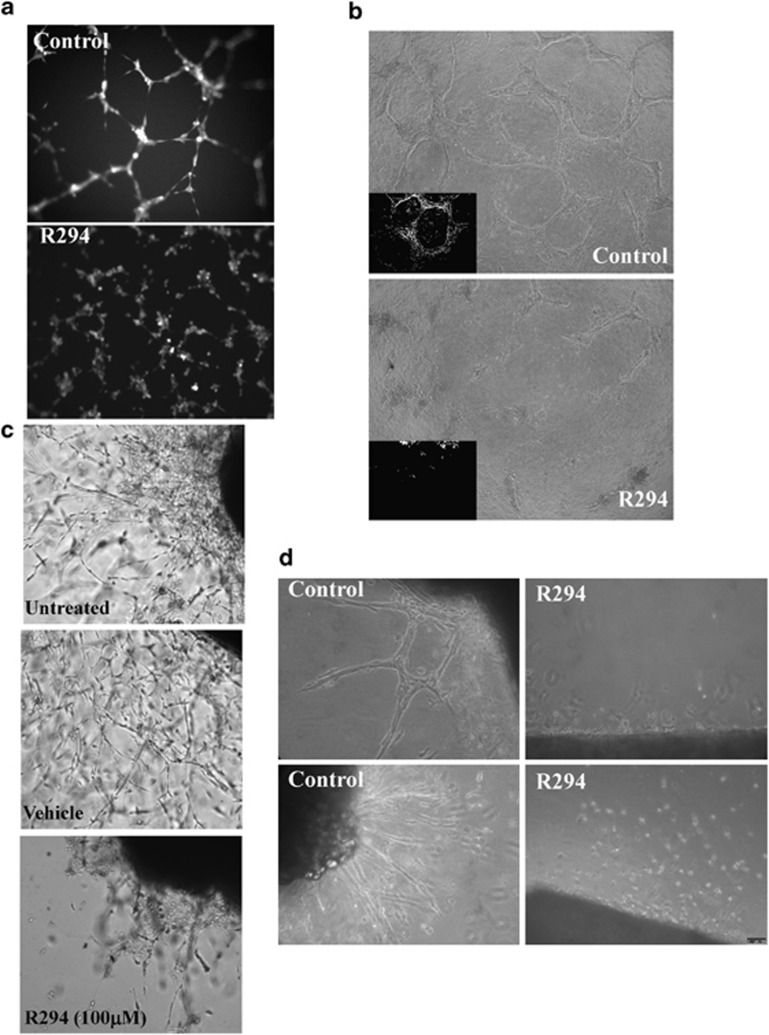Figure 1.
Effect of TG2 inhibitor R294 on endothelial tubule formation. (a) Inhibition of endothelial cord formation on Matrigel by R294. Representative image from three separate experiments. HUVECs seeded at a concentration of 15 000 cells per well in 12-well plates containing Matrigel and induced to form tubule like structures in EGM complemented medium in the presence of 100 μM R294 or vehicle control (0.01% DMSO) for 6 h. Cells were labelled with 2 μM Calcein AM for 15 min and were photographed using 484 nm excitation and 520 nm emission filter on a fluorescent microscope. (b) Inhibitory effect of R294 on HUVEC in collagen 3D culture. HUVECs (1 × 105/well, in 48-well plates) were mixed with rat tail collagen solution (final concentration 1.5 mg/ml) with 50 μM TG2 inhibitor R294 or the vehicle control (0.01% DMSO) and allowed to gelify at 37 °C for 30 min. Endothelial culture medium in the presence or absence of 100 μM R294 or vehicle was added to the well. Following a 4-day culture period, representative images with and without R294 are shown using a bright-field microscope (n=3). (c and d) Endothelial vessel outgrowth from rat aorta ring in Matrigel or thin layer collagen. Rat aorta rings (n=4) were embedded in Matrigel (c) or a thin layer of rat tail collagen (d) and incubated with endothelial cell medium for 7 days in the presence of 100 μM R294 or vehicle (0.01% DMSO) as described in the Materials and Methods. The representative images were taken using a bright-field microscope

